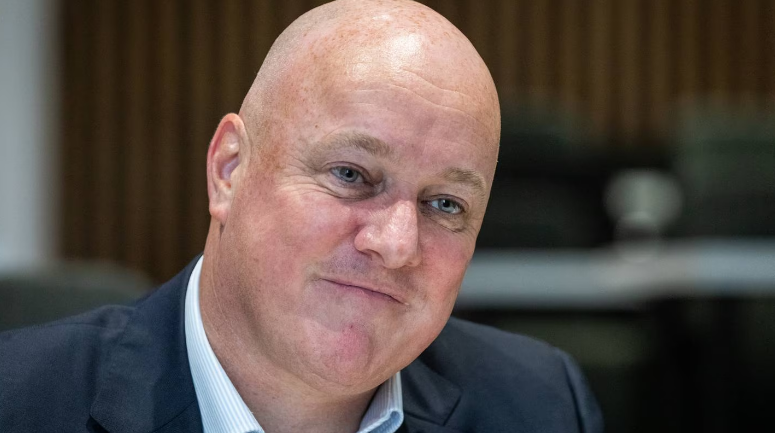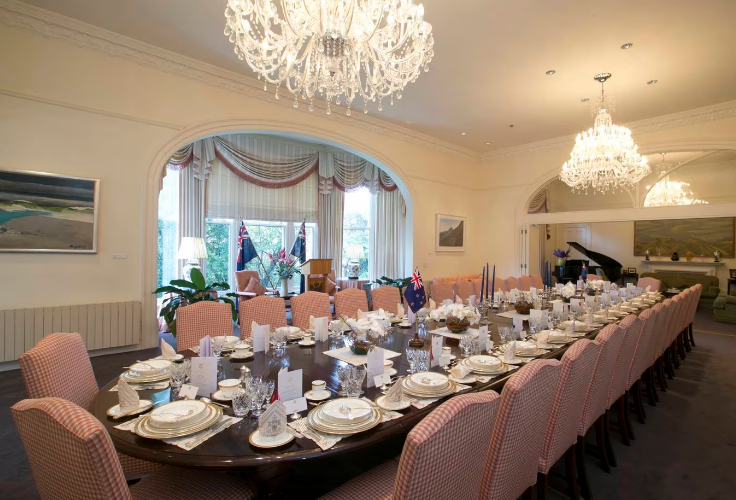
The New Zealand Herald has seen part of the report from the Premier House Board which advises the Prime Minister on the condition of the Wellington house. It has not yet been released because Luxon says decisions are yet to be made on what work to do with the property.
The part of the report that relates to the Prime Minster's apartment on the upper floor of Premier House catalogues a list of problems – from 30-year-old fittings and furnishings to a lack of insulation and windows that were not adequately sealed so let draughts in.
It said that a gap between refurbishments meant most fittings and furnishings were now more than 30 years old and of poor to average condition. It was commonplace for things to break. It noted the apartment was “uncomfortable,” had small, poor-quality bathrooms and was badly laid out.

The report included an independent building assessment which found it would need re-roofing in 2025, and that was little or no insulation, meaning it was well below current building standards. It was drafty and noisy because the windows were single-glazed and not well sealed and the gas-fired heating was not energy efficient.
The board concluded it only partially met building and residential tenancy requirements, was badly laid out, lacked soundproofing and had limited natural light.
The Prime Minister usually resides in that upstairs apartment while the lower floor is used for receptions and events.
It’s understood the total cost of the work programme the board recommended for Premier House and its grounds was about $30 million.
However, that figure included some major proposals for redevelopment on top of the basic work to modernise and refurbish it.
On Friday, Luxon defended claiming an optional $52,000 accommodation allowance to stay in his own apartment rather than move into Premier House, saying it was in need of maintenance so he could not move in until it was done.
Two hours later, after a flow of criticism, he announced he would stop taking that allowance and repay what he had claimed since becoming Prime Minister.
The Premier House Board report had noted other ministers could rent far superior accommodation on the private market.
That could mean there was a risk Prime Ministers would decide to reside elsewhere – and the associated extra costs of that.
It says running Premier House would cost the same whether the Prime Minister was living in it or not, so there were no savings. However, the costs of a Prime Minister living elsewhere would include costs around security measures at that other residence and the $52,000 accommodation allowance a Prime Minister can claim.
The report was commissioned by former Prime Minister Jacinda Ardern and handed to Luxon after he became Prime Minister.
Luxon would not comment on the report.

However, it is understood that Hipkins has offered to discuss bi-partisan support for reasonable maintenance and refurbishments that were required.
The report also points to the history of Premier House as a political football, saying that the politicisation of Premier House had contributed to its current bad condition.
It said even basic maintenance costs had come in for criticism and decisions on larger projects were made on an ad hoc basis, usually once an issue became urgent.
In 2011, Hipkins (then an opposition MP) had criticised former PM Sir John Key for spending $275,000 on repainting it and installing new carpet on the lower floor, which was used for receptions and to host visiting dignitaries.
Luxon is yet to make decisions on what to do about Premier House. On Friday he mentioned the options of selling or fixing it up – although he added that he believed the public would not want it to be sold.
He has pointed to the difficulties in approving a maintenance programme for the residence in the current economic climate – the government is seeking cost-cutting from government departments across to board.
The Premier House panel interviewed past Prime Ministers to get their views on the residence, saying each Prime Minister had used the space in different ways – whether to stay in for a couple of nights a week while at Parliament to basing their family there full time, as Ardern did.
It notes Premier House has the same status as Government House as an official residence, but falls well short of the standard of Government House which had a significant refurbishment from 2008 to 2011.
It noted that elements of the last refurbishment of Premier House in the 1990s had been to the detriment of the layout and heritage of the house.
- By Claire Trevett












